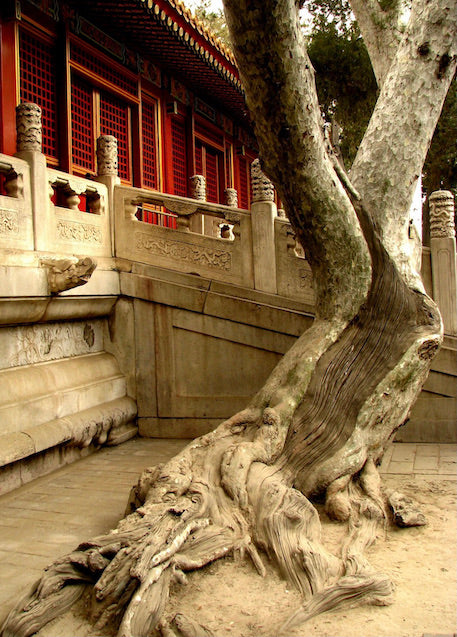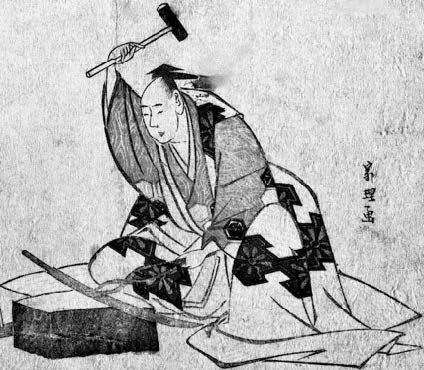Tree Root and Bamboo carving is a traditional art in Japan, and has a long history among the Folk Art carvers and practitioners specifically focused on supporting Ikebana, displays of precious artwork, and objects that have a practical utility such as Calligraphy brushes, brush pots and washers, containers, slabs, as well as the production of pieces of simply Aesthetic value. Three-dimensional objects such as miniature mountains are valued by Buddhists throughout Japan, for which many pieces cannot be named easily, and therefore are referred to as "nameless" root carvings. Integrating ingenuity and craftiness, they all focused on the unique features of ingenuous techniques exhibited in the creation of beautiful containers and display furniture.

It all began with wood craftsmen and the desire to support the formal traditions of Japan such as the tea ceremony and religious ceremonies with objects created out of crude tree roots and bamboo element. These works thoroughly exhibit the enthusiasm of number of root carves and Buddhist Monks in service throughout the Japanese development of carving that gained unique artistic appeal and winning the hearts of people throughout Japan and around the world.

The creating of root carvings included many steps including root selection, conception, processing, and lacquering all based on the important principle of making useful the natural tree and elements of the tree root. As for bamboo roots are different in their forms, either in size or in structure. Each root is suitable for carving according to its natural structure. The Japanese claim "three-tenths of the work is done by humans, seven-tenths are determined by nature," attaching great importance to making use of the traits of the natural root, such as the fibers, holes, knurls, veins, color and luster. With a motif in mind, the creator should employ different carving techniques on roots of different shapes; the ultimate purpose is to integrate the unique beauty of the natural root with the cunning beauty attained by carving. Since root carving is largely done by making use of the natural beauty, the opus is of an integrated style.

The second principle is highlighting the composition. There are quite many modes of composition in root carving, and the one most common is the "triangle setup", which is usually employed in sculpture. Other geometrical shapes, such as circles, ellipses and lozenges, are also used to further composition. Next comes the principle of expressing the mentality and sentiment of the creator. Root carving derives from real life, and it surpasses and regresses to it. However, it is by no means a replication of real life; rather, the creator reveals his inner feelings by making use of the characteristics of the natural root.
Finally comes the principle of seeking singularity and pursuing beauty. No art form is detached from the material used, and root carving is no exception. Root artists have to refer to nature for materials and their pursuit of singularity and beauty lies in the process of selecting roots as well as in the conception process. They have to find out and collect roots of various odd shapes, which give them creative inspiration. Only after obtaining a uniquely shaped root can the artist apply his or her wisdom, imagination and originality to creative bamboo and root carving.



